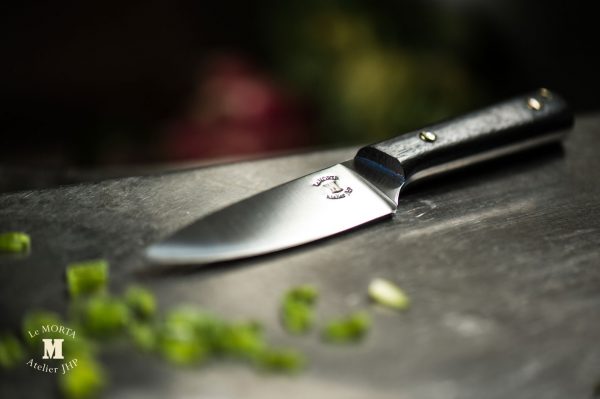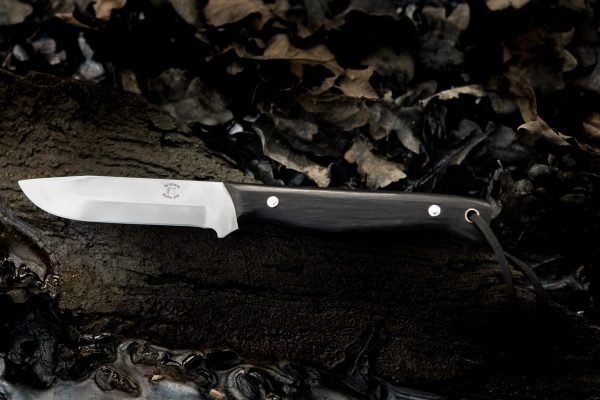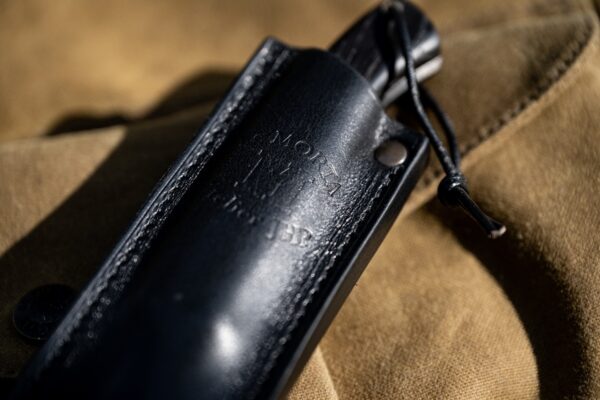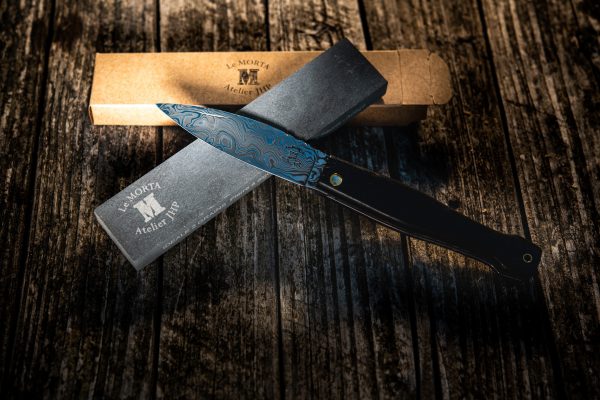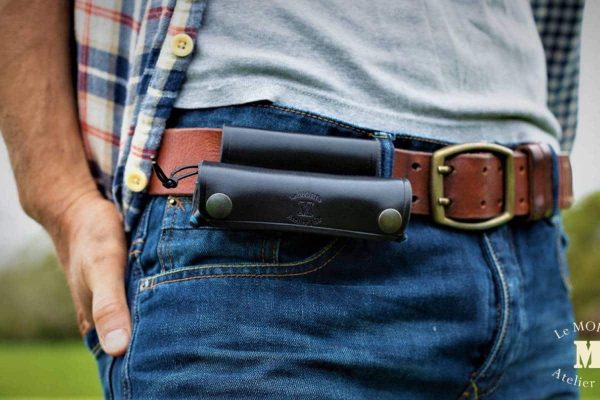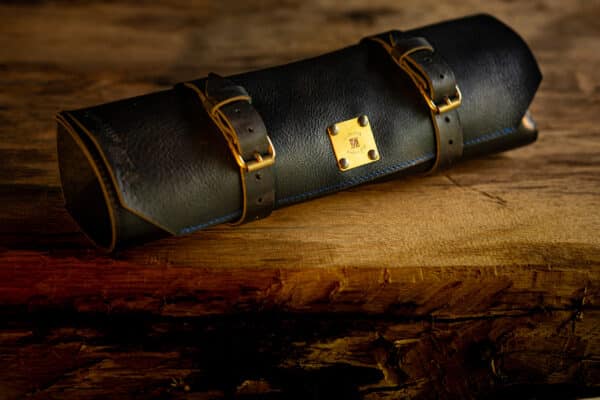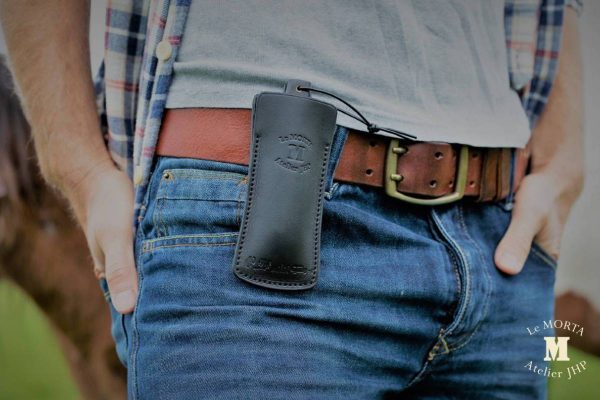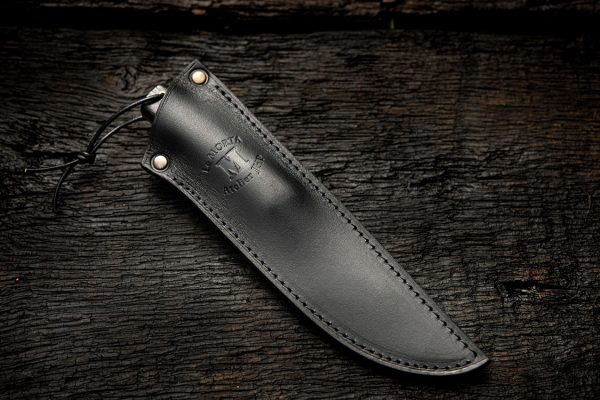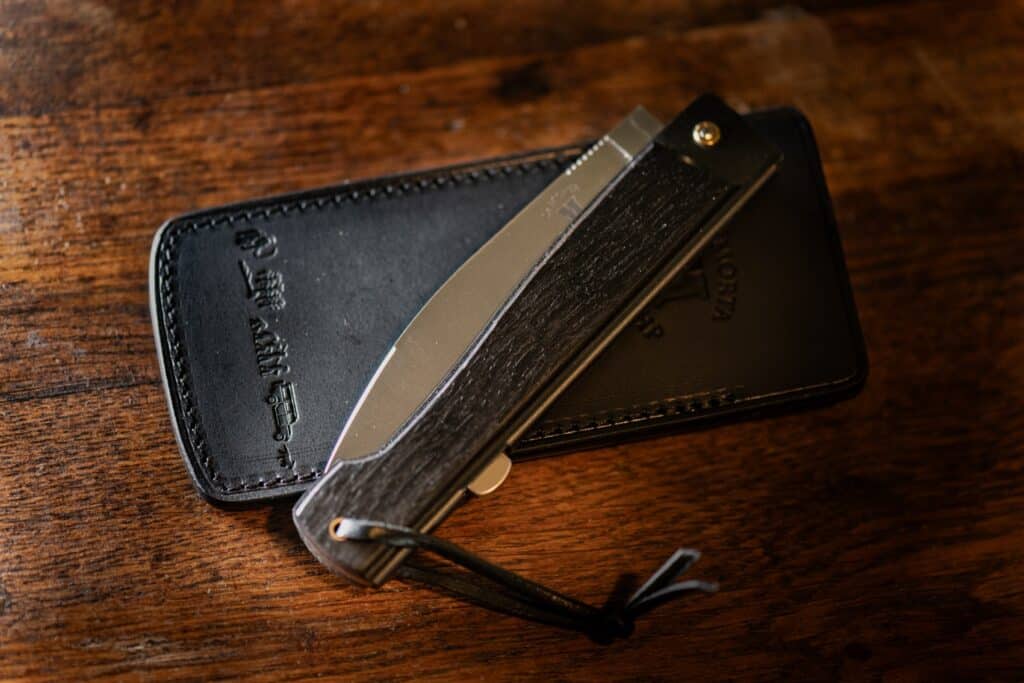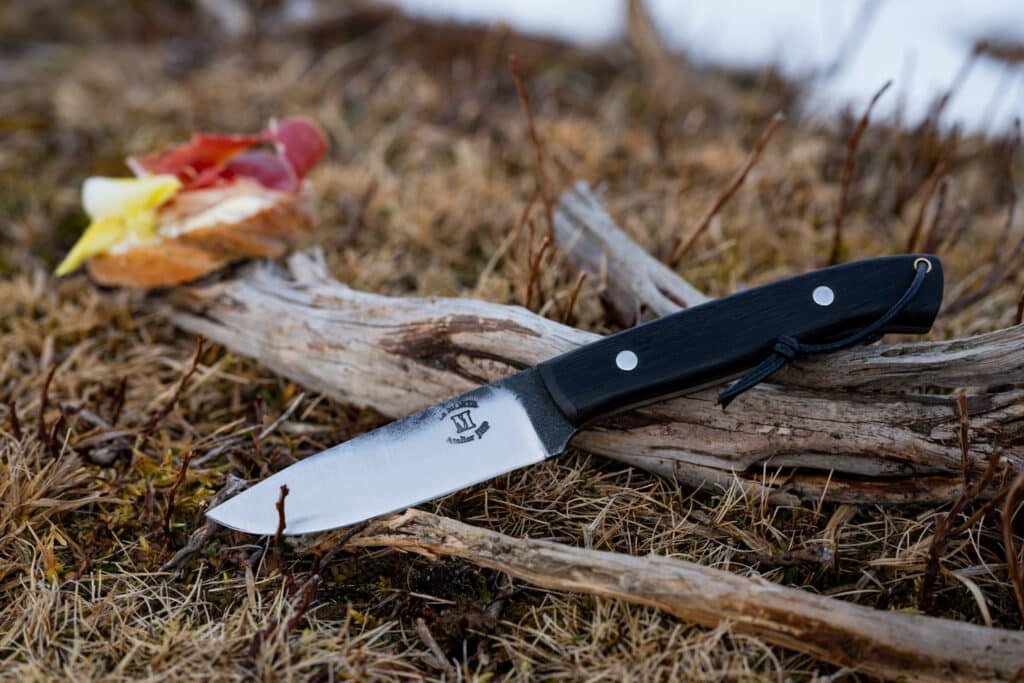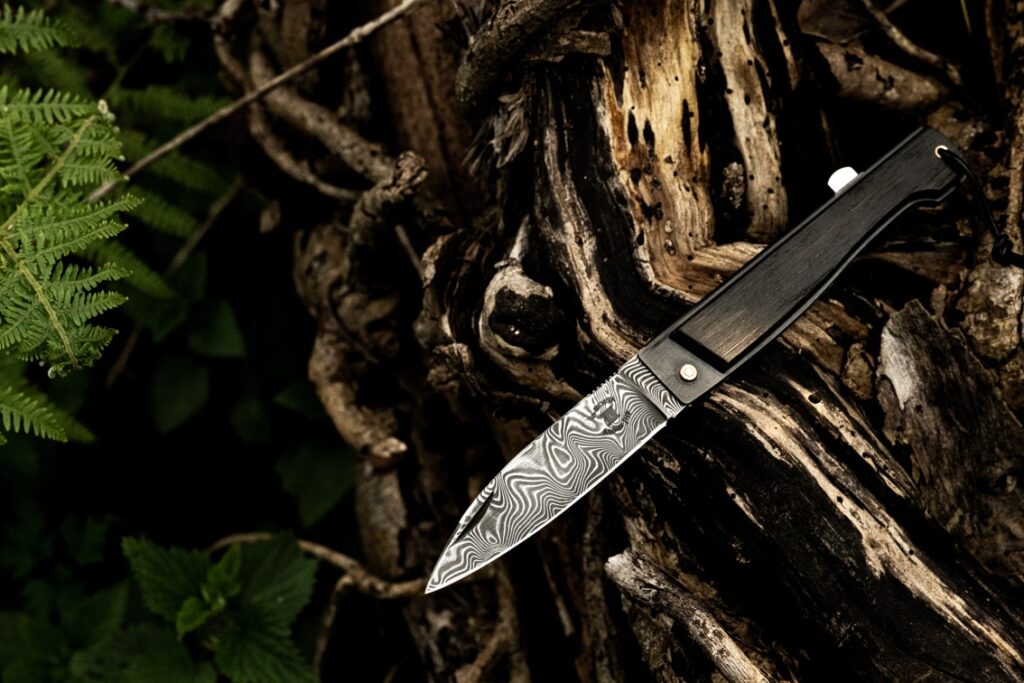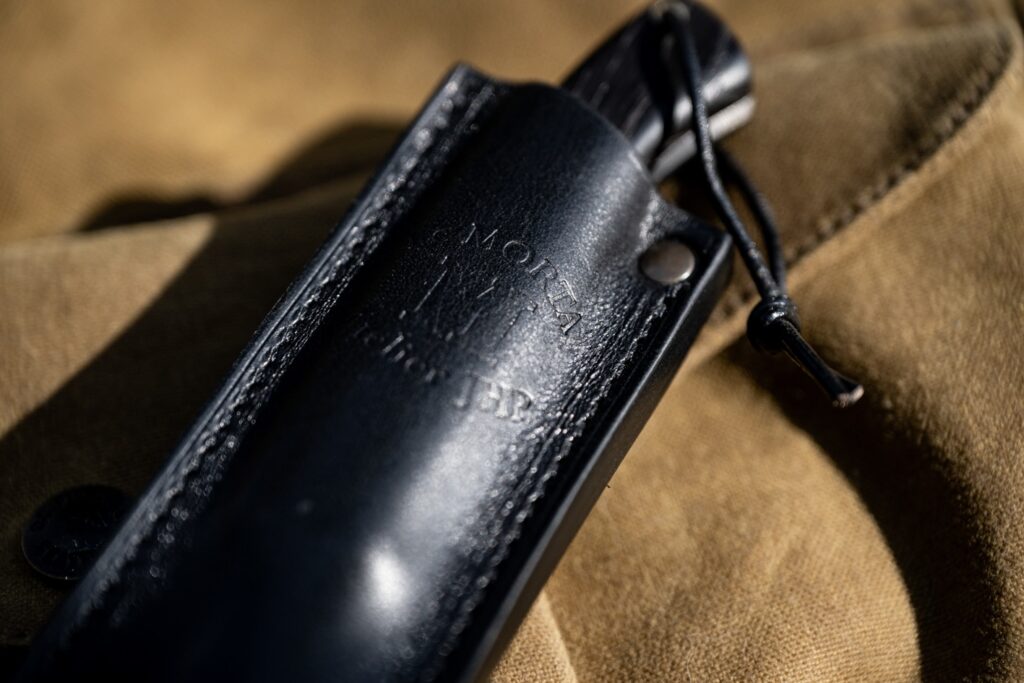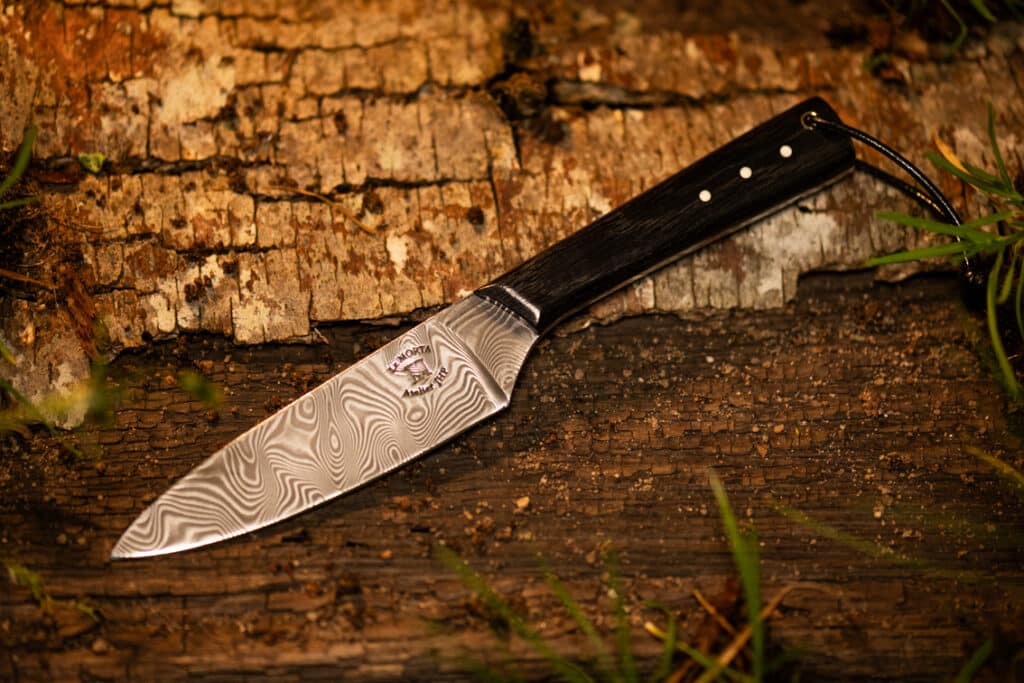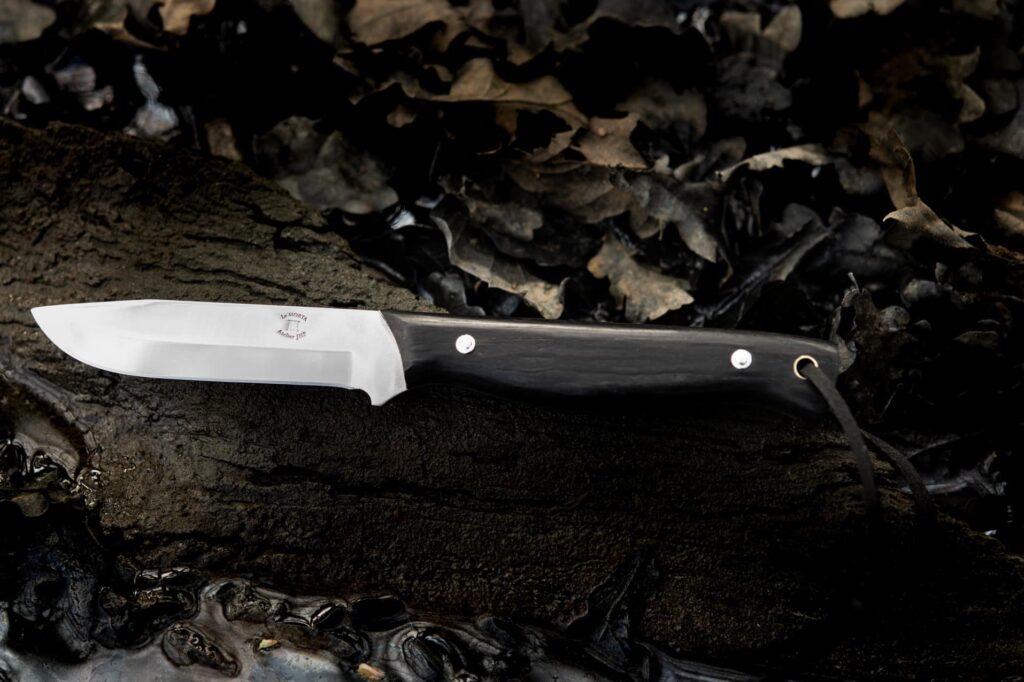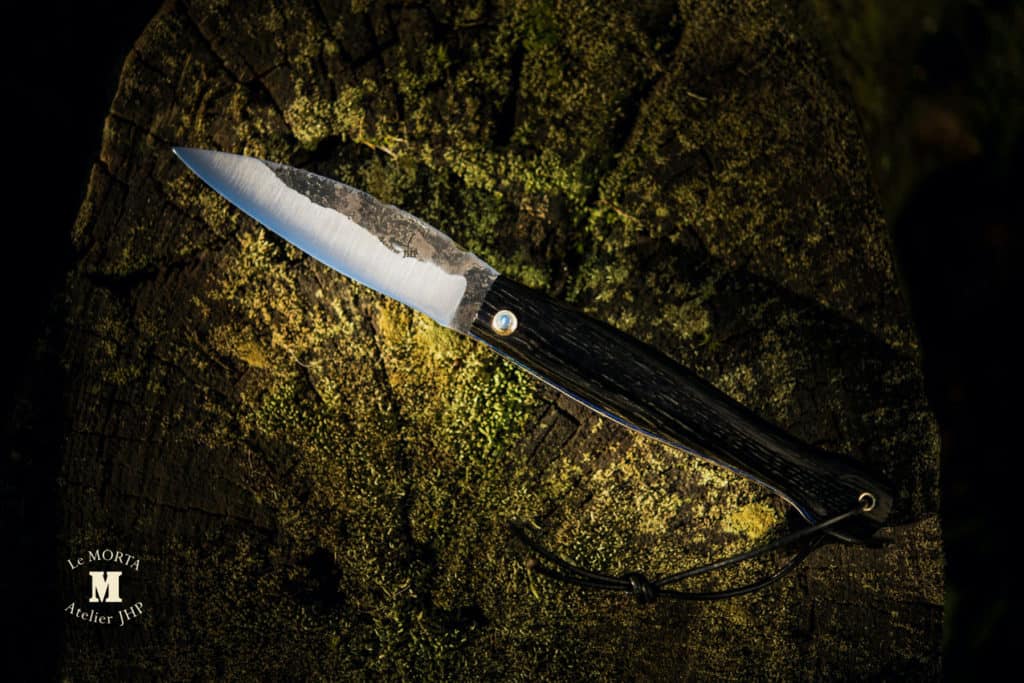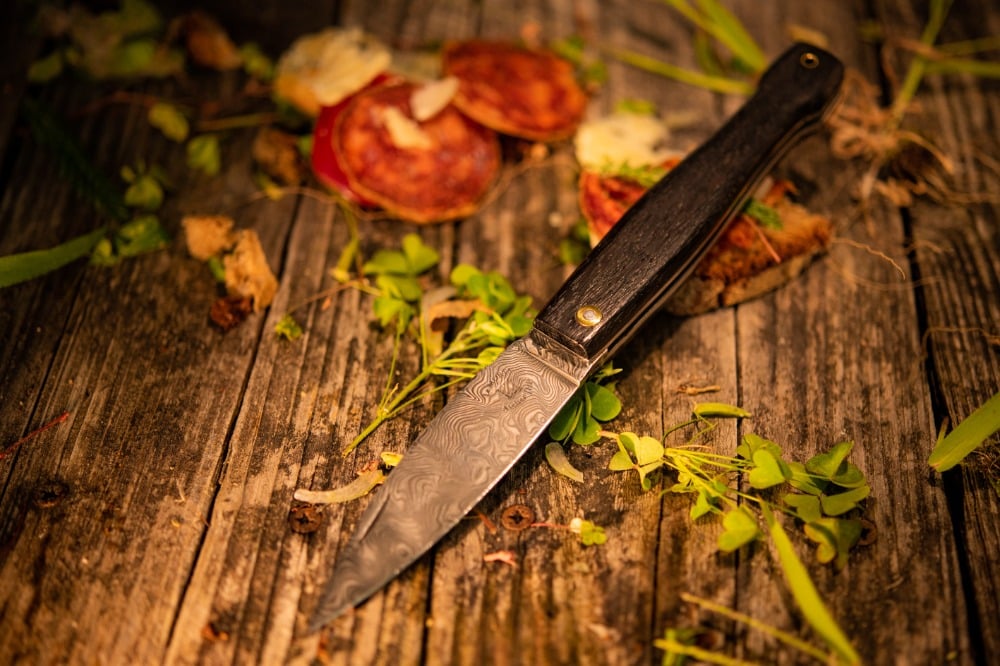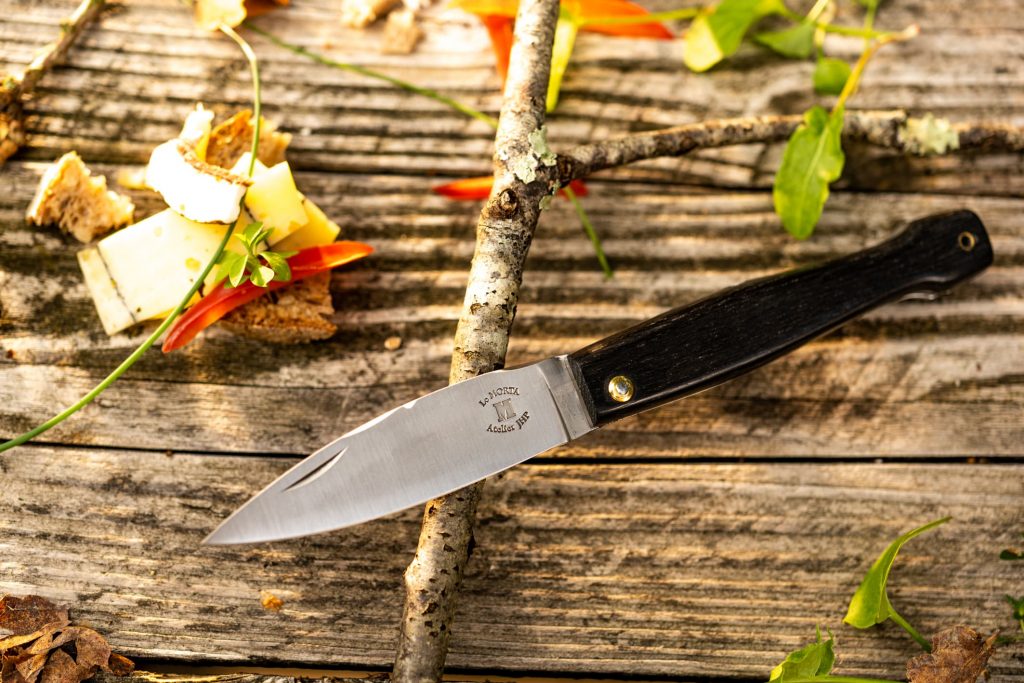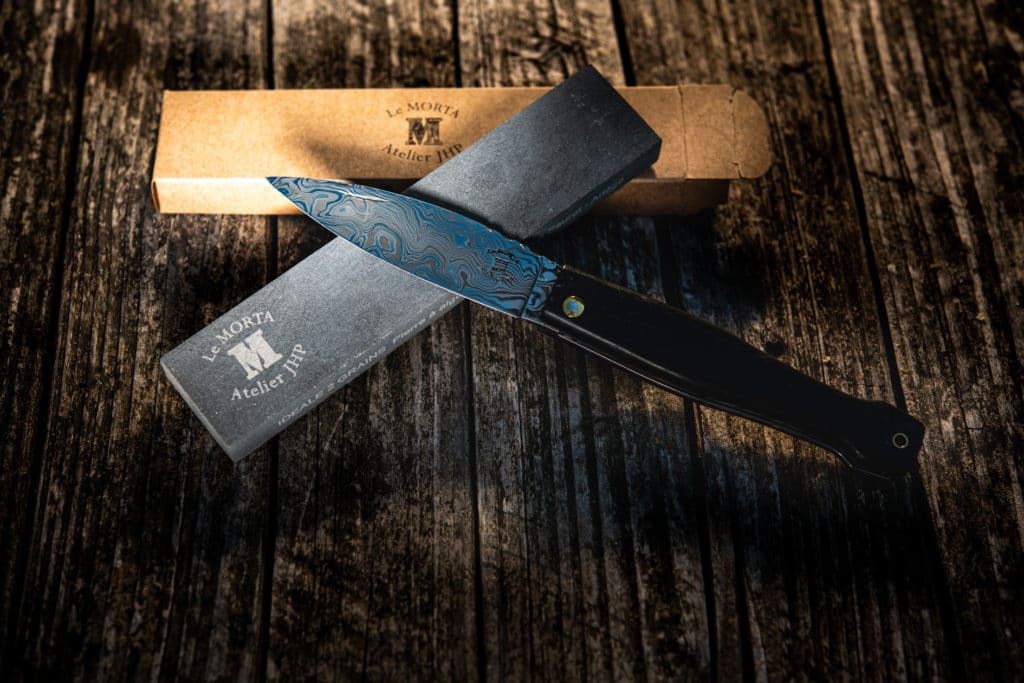The dew blurs the view of the rising sun. The crackling of the flames under the pan accompanies the rhythm of the knife’s slashes on the branch that the man is patiently splitting. No network, no watch, just wood, stone, water and fire. This is bushcraft. The primitive connection to the elements: observing, carving, cooking, sheltering. It’s not a sport, it’s a different way of living in the world. In this deliberate sobriety, the handle becomes an extension of the hand, the blade its essential accessory. As a survival tool and bivouac companion, the knife accompanies every gesture. The bushcraft knife, vital equipment for the wilderness, meets precise requirements. But it’s the comfort and happiness you feel when it hugs the palm of your hand. Let’s explore the jungle of criteria that make a good bushcraft knife.
What is bushcraft? Between nature and disconnection
Halfway between survivalism and scouting, bushcraft is an art of living. In an ultra-connected world, getting back to basics satisfies a fundamental need for simple things: shelter, food, fire and water. Bushcraft is an immersive experience in the wilderness (usually the forest), where human beings only rub shoulders with trees, rivers, sun and rain. It’s an opportunity to optimize resources while respecting the environment.
The bushcraft enthusiast finds his way around easily, recognizes edible plants, travels in safety, hunts and fishes, all on his own and in harmony with the ecosystem. They need to know how to react to the unexpected: slippery terrain, injury, animal encounters (wild boar?) or changing weather conditions.
These actions require a minimum of equipment, which you’ll find in your survival packs. Rope, canteen, compass, flint and, of course, a good knife. A nice knife works too 😉. And for that, nothing beats a French bushcraft knife built to last.
What’s a bushcraft knife for?
The bushcraft knife is the indispensable all-round tool for all survival and self-reliance activities in the wilderness. Its solid design meets the specific demands of outdoor life.
🔪 Its sturdy cutting edge enables you to cut wood, (logs, branches) or cord.
🔪 Its perfect grip brings comfort and safety. It would be a pity if it slipped out of your hands just as a goose and its marcassins crossed your path.
🔪 Its steel quality meets outdoor conditions such as humidity.
Working with wood
Living outdoors means chopping wood every day. Chopping branches to feed the campfire, clearing a blocked trail, carving a cooking utensil or building a sturdy shelter: essential activities for surviving far from civilization. All require a reliable blade. The experienced bushcrafter makes his own tools from forest resources (stakes, hooks, fishing rods, etc.).
Finding food: hunting, fishing and gathering
Picking edible mushrooms or wild fruit, hunting big game or a few hares, hooking a couple of fish: the only ways to avoid starvation when supermarkets are scarce. To do this, you’ll need to build tools and traps.
Cooking over an open fire
After hunting, fishing and gathering, it’s time for primitive culinary preparations: skinning, butchering, gutting, boning and slicing. A good blade is essential. Some choose a fixed blade, while others prefer a folding knife slipped into their pocket.
Finally, cooking over a wood fire has several advantages: you eat hot, you don’t suffer from the cold, and you keep pests away.
Bonus: take advantage of this exceptional moment to tell old stories to your fellow adventurers and perpetuate the family memory.
How to choose a bushcraft knife?
Steel and corrosion resistance
What’s the best steel for a bushcraft knife? Logically, choose a steel that resists corrosion, even in damp environments. Stainless or carbon steels are ideal. With a hardness of 59 HRC, knives made from Sandvik 14c28n or N690 steel are ideal for outdoor use (hiking, camping, bushcraft).
The EDC (every day carry) knife meets all everyday needs. Versatile, it can be used in extreme conditions.
Fixed blade or folding knife
If you prefer to keep your knife close at hand, the folding knife is ideal. Slip it into the pocket of your cargo pants.
A fixed-blade knife, stored in its sheath, fits securely in your backpack.
A bushcraft stainless steel blade will stay with you for a long time, even in the rain or in damp areas.
The Morta back-pump knife features a back-lock (or lock-back) system.
Ergonomics and safety
Focus on ergonomics. The best bivouac companion is the one you’re most comfortable with. A perfect grip means you can move quickly, precisely and safely, even in a hurry.
At the JHP workshop, you can taste the pleasure of holding our models in your palm. Shape, weight, balance, feel: your most effective compass.
The length of the blade defines the maximum cross-section of wood to be split. Bushcraft fans recommend a blade of at least 10 cm. It all depends on your intended use.
And no, women don’t always choose the smallest knives. Discover how to find the best knife for women.
Which knife handle for outdoor life?
If you’re looking for a handcrafted bushcraft knife, you’re a nature lover, sensitive to the environment and organic materials. A wooden handle will appeal to you much more than a composite material.
Morta is a swamp oak in the process of fossilization. It is found only in Brière (Loire-Atlantique). Its exploitation is governed by strict rules established by the Commission syndicale de la Grande Brière Mottière in agreement with the Parc naturel de Brière and biodiversity services. This noble wood owes its unique color to the nutrients it has fed on for 5,000 years. Black peat gives it its ebony hue, while brown peat gives it caramel highlights.
A French bushcraft knife: elegance even in hostile environments.
Cutting techniques: wilderness essentials
In bushcraft, a good knife isn’t enough to get you through the wilderness. A few precise woodworking gestures are essential for everyday life.
- Cutting on the fly: split the wood then strike it, using your strength and the weight of the blade to sever it.
- Batonnage: plant the knife across the branch. Then strike the knife to split the wood bit by bit. This cutting technique requires a fixed full tang knife.
- Fullgrip: hold the knife with your full hand.
- Stopcut: incise a mark on the stick with the knife.
- Puschcut: the thumb pushes (not pushes 😅) on the blade to enlarge and deepen the imprint as you go.
- Hedgehogs or feather sticks: cut shavings along the branch to ignite with matches or a lighter. You’re carving a natural firelighter, also known as a broom or feather duster.
- Make a cross, then hollow out each part to create a hook and attach a string (your future clothesline?).
Now you know the secrets of the best adventurers. Let’s take a look at their survival knife.
Maintaining your bushcraft knife
The art of sharpening
In video, our best knifemakers’ tips for a blade that lasts.
Mistakes to avoid for better knife durability
🟤 Turn the blade towards you. A cut always faces outwards for greater safety.
🟤 Use the knife on a hard surface (rock, stone). This will damage the edge of the blade.
🟤 Leave the knife lying on the ground. You could scratch it and injure yourself.
🟤 Neglecting sharpening. Regular sharpening (always by the same person) extends the life of your blade.
🟤 Clean your knife with aggressive products. A simple, dry, soft cloth is all you need.
🟤 Use the knife or blade as a lever. It may break.
🟤 Store your knife incorrectly. Store it (once clean) in a dry place away from light, in a sheath, in a sheath, in a drawer or in a knife block (between two hikes). This will help prevent corrosion and material deterioration.
The importance of the sheath for safety and durability
Proper storage of your bushcraft knife means taking good care of your blade and your fingers. At the bottom of your bug out bag, in your travel bag or hanging from the waistband of your jeans, it remains accessible. A well-designed bushcraft knife sheath accompanies every use with elegance, security and handcrafted discretion.
When Morta meets the art of French bushcraft
La Brière, a land of history for your handcrafted handle
Imagine holding in your hands a knife whose handle tells a 5,000-year story. Morta, the oak from the Brière marshes, offers the bushcrafter a unique connection with the past. Each Morta handle carries with it the memory of ancient foresters, men whose survival depended on their skill and their tools.
Handcrafted in our Loire-Atlantique workshop, each French bushcraft knife in Morta embodies a rare local savoir-faire passed down from generation to generation.
When you clasp this slowly patinating handle in your palm, you’re not just holding an exceptional bushcraft knife: you’re carrying the legacy of those who understood the forest. Morta doesn’t age: it ennobles. Your handcrafted bushcraft knife bears witness to your journey and adventures in the great outdoors.
🔗 Take a behind-the-scenes look at JHP art cutlery.
Customized knife with your bushcrafter image: rare materials, pictograms and engravings
A bushcraft knife is also a part of you. At Couteaux Morta, every piece can be shaped to your image. A rare inlay (mammoth ivory, blue fiber with deep reflections) tells of your unique link to nature. A pictogram or your own logo evokes your preferred terrain: deer for the tracker, fish for the fisherman, Morta extraction for the marsh lover.
What about engraving a handwritten message from a loved one on the handle?
Or engrave a phrase, a signature or a motto in one of our five fonts. Once in your hand, this knife becomes more than a tool: it carries your story.
Thus personalized, your Morta knife becomes the silent witness of your tribulations, carrying your bushcrafter’s soul.
Choosing a bushcraft knife is much more than a question of criteria. It’s about affirming a way of being in the world: autonomous, attentive, rooted. With a Morta knife, every gesture counts. Every adventure leaves a trace in your memory.
Article written by Christelle Lorant 🪶



